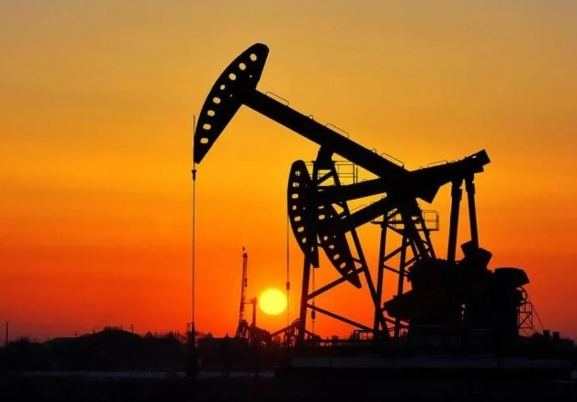O que você está procurando?
Utilizando antiespumantes de alto desempenho para otimizar o processo de operação do campo petrolífero
Jul 11, 2025Espuma - pode parecer inofensiva e insignificante. No entanto, no exigente ambiente de exploração, produção e processamento de petróleo e gás, se a espuma não puder ser controlada de forma eficaz, ela pode se tornar um obstáculo significativo e dispendioso. Como fabricante especializado na produção de especialidades químicas de alto desempenho, entendemos o papel crucial que antiespumantes confiáveis desempenham para garantir a operação eficiente, segura e lucrativa de campos petrolíferos. Este artigo se concentrará nos desafios e soluções específicos relacionados aos "antiespumantes específicos para campos petrolíferos".

O alto custo da bolha na indústria de petróleo e gás
Ao longo de todo o ciclo de vida do campo de petróleo, a formação de bolhas ocorre naturalmente, e as razões para isso incluem agitação, mudanças de pressão, liberação de gás, bem como a presença de surfactantes inerentes ao petróleo bruto, fluido de perfuração, água produzida e vários produtos químicos de processo.
1. Perfuração e Conclusão: A espuma na lama de perfuração reduzirá a capacidade de controle sobre a pressão estática da água, prejudicará a eficiência da remoção de substâncias sólidas, diminuirá a eficiência da bomba de lama e poderá levar à medição imprecisa do nível de líquido, colocando potencialmente em risco o controle do poço e a velocidade de perfuração (taxa de perfuração).
2. Produção e Separação: A espuma em separadores, agentes de tratamento e estabilizadores reduzirá significativamente a eficiência dos recipientes. Ela ocupa o espaço originalmente destinado à separação de fases, fazendo com que líquidos entrem nos gasodutos (o que pode danificar os compressores) ou gases entrem nos oleodutos/dutos de óleo/água. Isso resulta em produtos não conformes, aumento do consumo de desemulsificantes, redução da produção e possíveis paradas durante a descarga da espuma.
3. Tratamento e Purificação de Gás: A espuma em unidades de metanol, unidades de desidratação de etilenoglicol e separadores de vapor contendo enxofre prejudica gravemente o contato gás-líquido e reduz a eficiência de absorção/separação. Isso leva a maior consumo de energia, perda de metanol, má remoção de poluentes (como sulfeto de hidrogênio, dióxido de carbono) e possível degradação de soluções de metanol. Tratamento da água produzida: A espuma dificulta a separação eficaz de óleo e substâncias sólidas da água produzida em dispositivos de flotação (IGF, DGF) e tanques de sedimentação, afetando assim a qualidade da água necessária para descarga ou reinjeção e aumentando os custos de tratamento.
4. Transporte e refino: a espuma pode causar cavitação na bomba, medições imprecisas, transbordamento do tanque (riscos de segurança existentes) e redução da eficiência do oleoduto durante o transporte de petróleo bruto e o processamento inicial de refino.
Por que os antiespumantes de uso geral muitas vezes não conseguem resultados satisfatórios?
As condições no ambiente do campo petrolífero são extremamente adversas, o que representa um grande desafio para os antiespumantes convencionais:
1. Condições de alta temperatura: O ambiente subterrâneo e os procedimentos de processamento na superfície geralmente atingem temperaturas de 150°C (300°F) ou mais.
2. Situações de alta pressão: As pressões subterrâneas e do separador exigem o uso de antiespumantes que ainda podem funcionar efetivamente em ambientes de alta pressão.
3. Composição química complexa: O antiespumante deve ser compatível com várias substâncias químicas corrosivas e altamente eficazes (como aditivos de lama de perfuração (polímeros, argilas), inibidores de corrosão, inibidores de incrustação, desemulsificantes, removedores de sulfeto de hidrogênio, ácidos e bases) e pode funcionar efetivamente na presença delas.
4. Valores extremos de salinidade e pH: A faixa de salinidade da água produzida e de vários fluidos de processo varia de água doce a água altamente salina, e o valor de pH varia de fortemente ácido a fortemente alcalino.
5. Força de cisalhamento: alta velocidade da bomba e fluxo turbulento podem causar degradação física de antiespumantes instáveis.
6. Estabilidade a longo prazo: O antiespumante deve permanecer estável por um longo período de tempo e não sofrer separação ou degradação.
Solução personalizada: Principais características de uma solução eficiente antiespumante para campos petrolíferos
Nosso compromisso é desenvolver antiespumantes especialmente projetados para enfrentar esses desafios específicos nos campos de petróleo. As principais características dos nossos antiespumantes de alto desempenho incluem:
1. Dissipação rápida e controle de longo prazo: a espuma adicionada se dispersará imediata e rapidamente e, ao mesmo tempo, pode evitar a formação de espuma por um longo tempo, o que é crucial para operações contínuas.
2. Excelente estabilidade térmica e química: pode manter sua eficácia mesmo em ambientes de alta temperatura e na presença de substâncias químicas corrosivas fortes, sem degradação ou formação de resíduos.
3. Desempenho estável sob diferentes condições de pH e salinidade: pode manter um desempenho confiável em mudanças químicas da água encontradas em diferentes campos e processos.
4. Compatibilidade: O design do produto é compatível com produtos químicos comuns de produção em campos petrolíferos e fluidos básicos (à base de óleo, à base de água, lama sintética), sem causar reações adversas ou precipitação.
5. Estabilidade ao cisalhamento: pode resistir a danos físicos em condições de alto cisalhamento encontradas por bombas, dispositivos de estrangulamento e válvulas.
6. Eficiência: atinge controle ideal de espuma com o mínimo de uso, reduzindo assim os custos operacionais.
7. Conformidade ambiental e de segurança: A fórmula desenvolvida considera totalmente as regulamentações ambientais (como OSPAR, EPA) e os requisitos de segurança dos operadores.